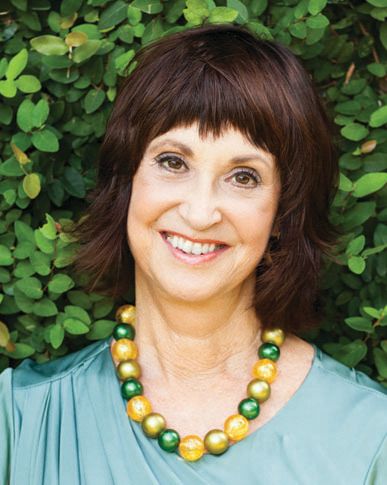From the Editor: A Farewell to Sarasota Magazine
I moved to Sarasota in 1981, and in 1985 signed on with this magazine. This month, I’m retiring. That’s a long run, and I have loved this job—and this city—every single day of my tenure.

Pam Daniel
Image: Rebecca Baxter
I knew little about Sarasota when I started, but journalists get to ask almost anybody all sorts of probing questions. The more I listened, the more I learned. I interviewed famous writers and poor migrants; scam artists and lion trainers; politicians, chefs, lonely seniors, inspiring philanthropists, tennis stars—and Sarasota’s cutest dog. Everybody taught me something: which restaurant serves the best tropical cocktail, why developers announce plans for projects they don’t intend to build, how dolphins have sex, what characterizes midcentury architecture, how Siesta’s famous sand was formed—and why people from all over the world love this place. My talented colleagues and contributors initiated me into the joy of creative collaboration—and you readers taught me humility, when I realized that not one of my impassioned editorials ever changed a single thing.
Sarasota—and I—have changed a lot over those years. But unlike me, Sarasota has become younger, richer and more glamorous.
In 1985, Sarasota was a low-profile resort and retirement destination, where genteel Midwesterners came to enjoy sunshine and quiet beaches. The county population was 224,000, a little more than half of today’s 387,000. The airport was a small, Casablanca-style outpost where a wet blast of tropical heat hit you when you climbed down the steps from the plane; and I-75 hadn’t been completed from Tampa. (That came in 1986).
Homes were modest by today’s standards—even wealthy people often lived in low-key ranch homes along the water—and we had recently started an upscale advertising section called “Homes 200,” which featured properties starting at the awe-inducing price of $200,000. Cattle grazed on the pasture that would become Lakewood Ranch, and much of University Parkway was a two-lane dirt road.
When I arrived, Sarasota was still known as an artist’s colony. Painter Syd Solomon and his wife Annie hosted lively parties in their Gulf-front home, and John D. MacDonald was writing his Travis McGee mysteries on Siesta Key. Even then, Sarasota buzzed with cultural energy, with the Van Wezel, a busy theater scene, a new home downtown for Sarasota Opera, and gallery openings that were the place to be on Friday nights. But a ballet company was years away, and the Ringling Museum was shabby and languishing.
Downtown, with some locally owned banks, restaurants and a store called Cheap Jeans, was quiet even during the daytime; it was a desert at night. Social life centered around yacht and country clubs. We had some black-tie galas, like the Orchid and Mistletoe balls, chaired by grande dames in pearls and puffed sleeves; and even a newcomer could soon feel she knew just about everybody on the social scene. The town was small enough that the newspaper’s chatty gossip column, written by Helen Griffith, was a must-read for everyone from business leaders to social climbers.
Even well into the ’90s, Sarasota remained under the nation’s radar. I remember writing a story that involved calling travel agents all around the country and asking them for their impressions of our city. “Saratoga?” many said. “Isn’t that in New York?”
That’s a far cry from today’s Sarasota, where lavish mansions line our waterways, development sprawls south and east, and thousands of new apartments are rising downtown. If you spread your blanket on world-famous (and crowded) Siesta Key Beach, you’ll hear languages from around the globe. Nobody knows everybody anymore; that’s impossible in a town that’s being flooded with newcomers, from ultra-wealthy baby boomers to young workers. It’s exciting—and it’s complicated, too, since along with the new arrivals and amenities, we also have traffic jams, soaring housing costs and a widening gap between rich and poor.
Still, when I asked our editors whether they’d rather live in the sweet, small town of decades past or today’s booming city, every one of them voted for today. “It’s so vibrant,” they said. “Our arts groups are national stars.” “There’s so much more to do.”
Now that I’ll have more time, I intend to enjoy those new attractions myself—along with such classic treasures as our Gulf beaches. And I’m leaving you in
good hands. Our creative team of new editor-in-chief Susan Burns, executive editor Kay Kipling and creative director Gigi Ortwein, along with group publisher Kelley Lavin, are gifted, experienced and eager to expand and improve the magazine. I know they’ll do exactly that.



